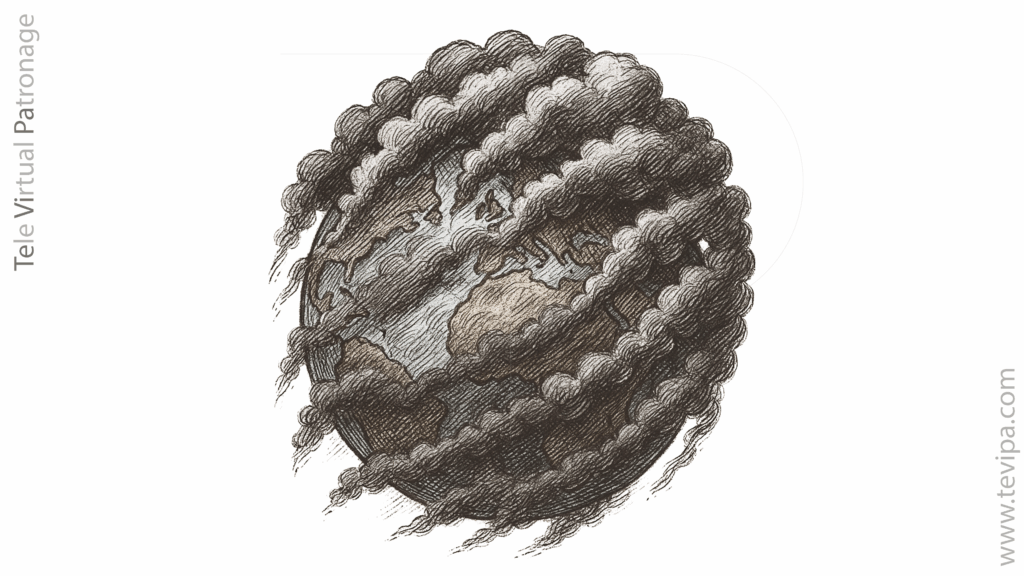
The Dictatorship of Fashion: The Body Against the Number
1. The Lost Origin of Measure: The Root of the Conflict..

We come from tailoring — from the craft where the body commands and the garment obeys.
With the tailor, the client is their own stylist: they decide, imagine, and choose the natural fabric that attracts them.
The tailor advises and accompanies.
From that union of desire and matter, a single garment is born: a person, a work, an unrepeatable gesture.
Against that tradition, industrial sizing imposed its law: numerical sizes, endless series, uniform bodies.
What began as a practical solution to dress soldiers became the dogma of an industry that poisons the planet, dulls taste, and seeks to impose the same image on different beings.
In mass production, the garment commands and the body obeys.
We have reversed the natural order.
Mass production was not born from art but from logistics.
It doesn’t dress bodies — it organizes them.
2. Bobo: The God Made Logo..
No one knows for certain when Bobo appeared.
Some say he emerged from a perfume commercial; others, that he was a collective projection of the desire for a new aesthetic messiah.
But one thing is sure: one day —without past, biography, or apparent effort— he was simply there.
Perfectly illuminated, ambiguous, and unnecessary.
At first, Bobo didn’t design anything — he didn’t even speak.
He declared that beauty was a contagious disease, that ugliness needed marketing, and that he would infect everyone;
he said that the point was not to dress bodies but to dress the Body — someone in his own image and likeness.
No one fully understood what he was saying, but his tone, his posture, and his silences were irresistible.
The cameras loved him, and in the 21st century, that equals eternity.
His first public appearance was in a Parisian garage, where he improvised a runway with no models.
Instead of bodies, he placed mirrors.
He invited the audience to look at themselves and said:
“Love yourselves. Desire yourselves. Buy yourselves.”
No one knew whether it was art or marketing — but everyone obeyed.
The industry, always hungry for figures who seem rebellious without threatening the system, adopted him instantly.
Magazines proclaimed him “the embodiment of new luxury”; brands fought for his signature, influencers for his reflection.
Bobo realized that talent was a burden and replaced it with charisma.
He never drafted another pattern —if he ever had— nor touched another fabric: he only signed concepts.
His leap to stardom came with his collaboration with the Malbelo chain.
Bobo was not discovered — he was manufactured.
The system needed a god, and he offered himself.
His voice floats between campaigns and scandals; his image multiplies in holograms, collaborations, and virtual runways.
No one has seen him eat. No one has heard him laugh.
But everyone has repeated his phrases.
And they recognize his rags.
No one has ever been seen wearing his clothes — not even on sale. They’re too exclusive.
Exclusivity —and genius, like Bobo’s— in the world of mass production equals immortality.

3. Long Live Bobo, Let the World Die!..
No empire survives without gods, and the fashion empire urgently needed one.
A god without ideas, without age, without biography — someone who could be everyone and no one.
Thus Bobo was born, and the system breathed a sigh of relief.
At last, it had a face to worship while continuing to manufacture ruin.
Bobo doesn’t design fashion: he justifies it.
Every time he smiles in a campaign, a river changes color.
His collections don’t come from Parisian ateliers but from windowless factories, where the hands sewing his signature can’t yet read it.
There, among steam, fatigue, and noise, are born the garments that sustain his myth: T-shirts, jackets, dresses identical to last year’s, but with a new price, a new lie, and a new expiration date.
Luxury needs distance.
That’s why, while the smoke from factories covers the roofs of invisible cities, Malbelo stores shine on their immaculate avenues.
Inside, the air smells of exclusivity, and salespeople smile like in a mass.
Outside, rickety trucks unload half-closed boxes from which threads, labels, and remnants of dignity escape.
The body, once the measure and the origin, has become waste.
The garments that once promised identity end up piled in landfills on the other side of the world, where the price of gold equals the price of hunger.
But none of that matters, because Bobo is still alive, still shining, still promising the aesthetic salvation of a planet that no longer recognizes itself in the mirror.
The world dies of elegance,
and Bobo cuts the ribbon at its funeral.
Postscript for a Sick World on Sale..

The dictatorship of fashion needs neither whips nor censorship.
It only needs admiration.
As long as Bobo lives, he will keep dictating the commandments of desire, and we will keep repeating them, believing we are choosing.
The system doesn’t impose itself — it celebrates itself.
And when there’s nothing left to sell, it will invent a new void.
Brighter, more sustainable, more profitable.
Thus, amid smoke, mirrors, and recycled promises, the body —the one that once commanded and was sewn with respect— ends up becoming its own caricature.
And when everything seems lost, it’s worth remembering the essentials:
Fashion became a dictatorship the day the body ceased to be the measure and became the victim.
The modern consumer mistakes choice for freedom and buys their own prison wrapped in tissue paper.
The market no longer manufactures clothes — it manufactures desires that expire with the next season.
TeleVirtualPatronage doesn’t sell garments: it defends bodies.
It conceives pattern-making as a human language, not as a formula of production.
Each pattern is born from the real body and dies with it, never passing through the toxic filter of sizing.
Faced with a system that measures to dominate, it proposes to measure to understand.